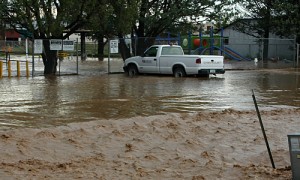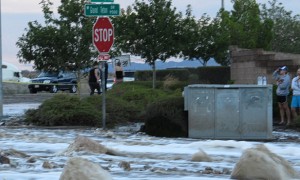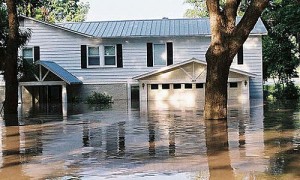Knowing facts about floods and the damage flooding can inflict on a home could help save you thousands of dollars. Because of Jacksonville’s low sea levels and proximity to the Atlantic Ocean and the St. Johns River, Jacksonville area residents are at high risk for flooding. Numerous storms and often daily rain showers only add to the area’s high flood risk.
According to the National Flood Insurance Program, just an inch of water can cause costly damage to your property, and the average residential flood claim is about $30,000. Because Jacksonville homes do not have basements, the flood water rises in living areas to saturate carpets and ruin floors, making flood damage more costly than in other areas. Being aware of the facts about floods, keeping these tips in mind, and being proactive about how to prevent flooding, can save you from costly damage caused by floods.
Water Seal Your Home
An easy and inexpensive way to prevent flooding is to make sure foundation cracks are sealed and roof shingles are secured. Foundation cracks can be sealed easily with caulk or cement from a hardware store. These tiny cracks can provide a pathway for floodwater to enter the home. If there are sunken areas in your home’s foundation, make sure to fill them in and level them out with dirt.
Check Your Home’s Drainage System
When a house’s drainage system is overwhelmed with water, it can cause residential flooding. Install a French drain away from the home to collect water that saturates the yard. Make sure the drain remains clear of debris. Removing leaves and dirt from gutters will help water move through your home’s drainage system better.
There are flood prevention kits you can purchase for your home that will shut off water if levels get too high, but these can often be costly.
It is also important to keep a catalog of all your expensive belongings inside the home just in case your home is flooded. Know where your main water shut-off valve is – if a pipe bursts or storm water starts to take over your home, you’ll need to get to it quickly to minimize damage. Keeping tabs on your personal belongings, as well as knowing where everything is located in your home, can save you significant money if a flood hits.
Purchase Flood Insurance
Because most homeowner’s insurance policies do not cover flood damage costs, you may want to consider purchasing flood insurance. Costs depend on the property’s flood risk and how much insurance is purchased; according to the National Flood Insurance Program, the average flood insurance policy is $600 per year. Flood insurance typically covers the home, its foundation, appliances, and belongings. However, it usually doesn’t include mildew or mold that could have been avoided, cars on the property, or the home’s landscaping, so be sure to check with your insurance agent to determine the best flood insurance option for your home.
[cf]skyword_tracking_tag[/cf]






